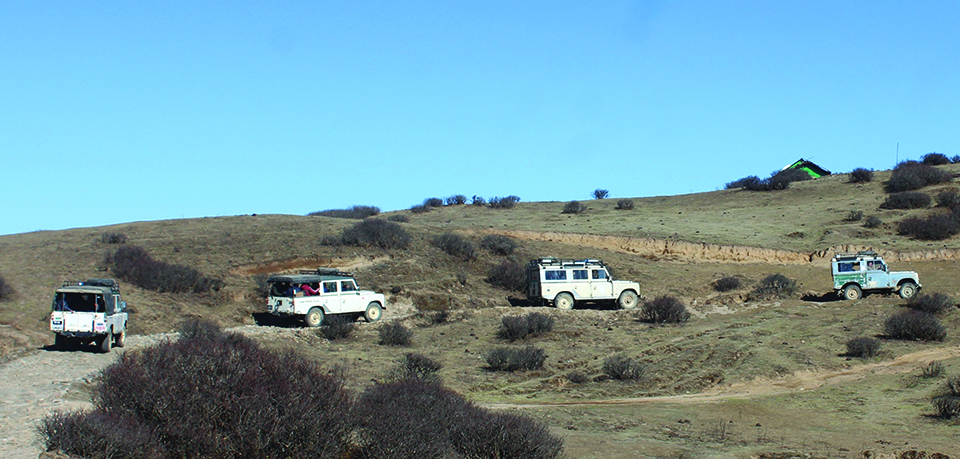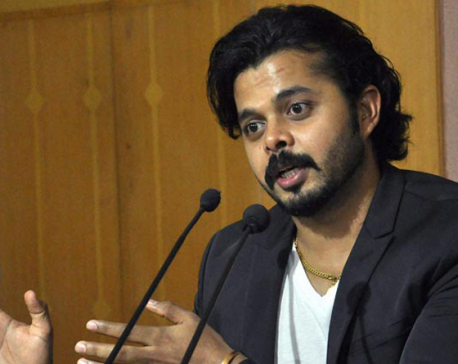
OR
Ban on 20-year-old vehicles deprive rural areas of transportation
Published On: September 26, 2018 10:27 AM NPT By: Bhim Chapagain

ILAM, Sept 26: There was a huge excitement among the local representatives when Sandakpur Rural Municipality purchased a brand new Bolero jeep last year. Even though some residents protested against the move terming it an extravagant expenditure, its representatives defended that claiming that was meant for the welfare of rural municipality's residents living in village and towns.
During this one year, the jeep was used for around six months, the rest of the year it remained parked in lack of motorable road. Considering this, residents continue to fume at the local representative for unnecessarily spending 3.5 million for purchasing the vehicle. However, Udaya Rai, the rural municipality's chairperson, defended the purchase claiming that the jeep was meant to operate only during the winter season.
"A Bolero jeep cannot ply here during the monsoon season. We were aware of its shortcomings and therefore wanted to buy a second-hand Land Rover jeep. However, due to ban on purchasing vehicles older than 20 years, we had to compromise with our initial plan and buy a Bolero jeep," Rai said. "If you ask about roads, there are roads everywhere here. But if talk about quality road, there are no roads yet," he added.
While, locals' complaints that the local representatives do not reach out to them the local representatives themselves complain that they don't have transportation facilities to do so. Rai stated that the local representatives either travel on foot or use old vehicles whenever possible.
He states that the new vehicles purchased by investing 'millions of rupees' have not given much respite. Only four wheelers are capable to ply the difficult roads. "With the restriction on old vehicles, which were four-wheel drive, like the Land Rover, transportation to remote areas has come to a halt. People are facing difficulties and getting angry," Rai said. "In monsoon, it is simply impossible for general vehicles to ply the roads. Only four-wheel drive vehicles are capable to ply the difficult roads," he added.
Considering environmental reasons, the government had put a ban on vehicles older than 20 years. This pushed four-wheel vehicles like the Land Rovers out of service. As a response, local authorities brought new vehicles for office use. Some are still in the procurement process. However, the decisions have made life of people living in rural areas very difficult. Due to the difficulty faced by rural municipalities following the ban on old vehicles, including the four-wheelers that were capable of plying rural roads, they are now calling on the government to review the ban.
"They took the decision considering the situation of pollution in Kathmandu. Old vehicles are polluting roads and environment there," said Rai. "But it is not the same case everywhere. Here, we can still use those vehicles for a long period of time," Rai added.
According to Rai, the ban has severely affected people living rural areas. In lack of transportation facilities, they are being deprived of even emergency medical care, Rai said.
"For instance, if we have to rush a pregnant woman to hospital, we don't have a vehicle that is capable to ply the rough roads. There are plenty of the banned four-wheelers, but we are not allowed to operate them," he said.
The ban on 20-year-old vehicles should be applicable only in big cities, Rai opined. Kathmandu can implement it, if it wants to. But for other areas across the country, the local government should decide for itself, he argued.
The ban on old vehicles has literally made the villages 'vehicle free zone'. Movements have come to 'a zero', he claimed.
Ban of 20-year-old vehicles forced almost all four-wheelers out of service. As two-wheel-drive vehicles are not capable of plying rural roads during the monsoon season, local governments are demanding scrapping the ban.
"Locals are deprived of transportation facility. There are hardly any vehicles seen in Panchthar, Taplejung, Sankhuwasabha, Dhankuta, Tehrathum and Bhojpur among other eastern districts. This is not fair," Rai said.
Rai argued that the needs and conditions of rural villages are different than that of the cities. "The ban is totally impractical for rural areas like ours. The government should seriously review this decision," he said.
The government had banned the old vehicles with effect from 1st March in Kathmandu valley and from 15 March outside the valley. Provincial governments are discussing the issue and might come with suggestions different from the ones presented by the study teams that were tasked to assess impact of such a move on remote areas before implementing the decision.
One of these study teams, had visited Sandakpur as well. They had held discussions with the local stakeholders after inspecting vehicles that were in use at the time. According to Rai, locals had suggested that they were not in favor of banning the vehicles until conditions of their roads are improved.
"At that time, reports were made with suggestion that condition of the roads should be improved before banning old vehicles. We had also suggested that the old vehicles should be banned from certain zones only," Rai stated.
Even Director General of the Department of Transport Management, Chandraman Shrestha was of the same opinion. Though banning of the old vehicles was a welcome decision, there should be certain conditions that consider special needs of certain areas, he had said. "He had told us that the same decision won't work for the busy city like Kathmandu and a remote zone like Taplejung," Rai reported.
Now the ban is under wide discussion and this should be reviewed, Rai said calling on the provincial government to take decision that is in favor of the local population.
You May Like This

Kerala HC lifts life ban on cricketer Sreesanth
KOCHI, August 7: In a relief to cricketer S Sreesanth, the Kerala High Court today lifted the life ban imposed on... Read More...

Angelina Jolie takes on travel ban in New York Times op-ed
NEW YORK, Feb 3: Angelina Jolie says that discriminating against refugees for their religion or country of origin "invites the very... Read More...

NCF seeks ban on sale of GoodLife Glow lollipop
KATHMANDU, July 6: National Consumer Forum (NCF) has urged the government to put a ban on sale GoodLife Glow brand... Read More...




Just In
- MoHP cautions docs working in govt hospitals not to work in private ones
- Over 400,000 tourists visited Mustang by road last year
- 19 hydropower projects to be showcased at investment summit
- Global oil and gold prices surge as Israel retaliates against Iran
- Sajha Yatayat cancels CEO appointment process for lack of candidates
- Govt padlocks Nepal Scouts’ property illegally occupied by NC lawmaker Deepak Khadka
- FWEAN meets with President Paudel to solicit support for women entrepreneurship
- Koshi provincial assembly passes resolution motion calling for special session by majority votes







_20220508065243.jpg)






Leave A Comment